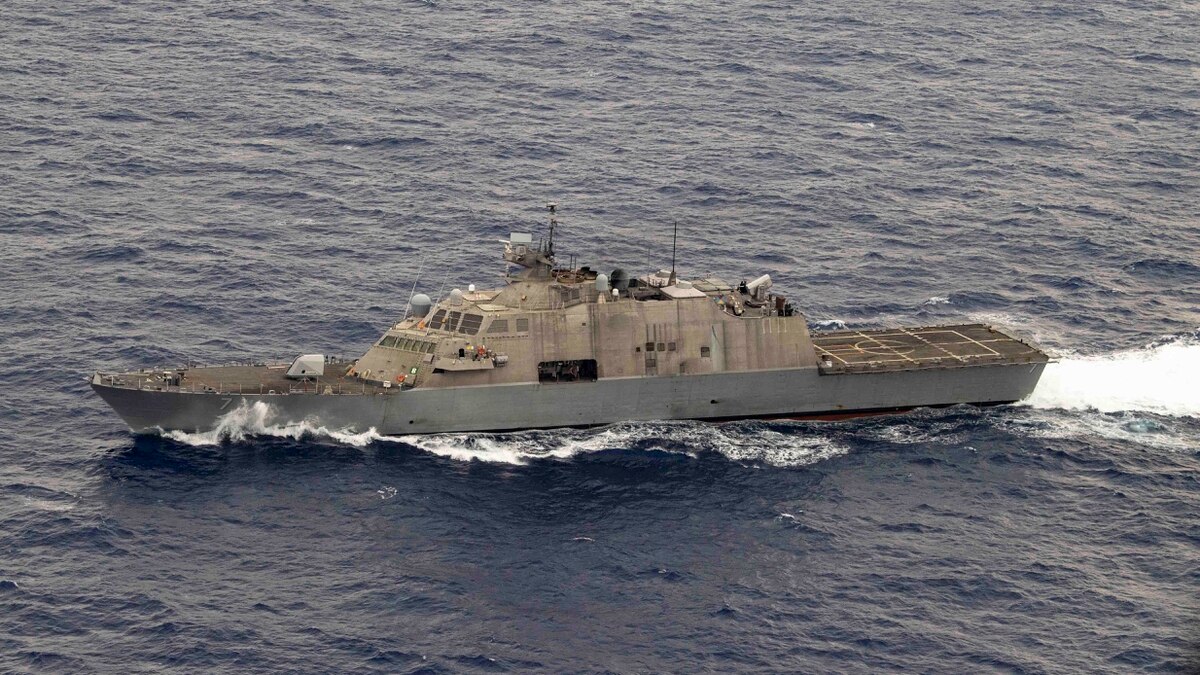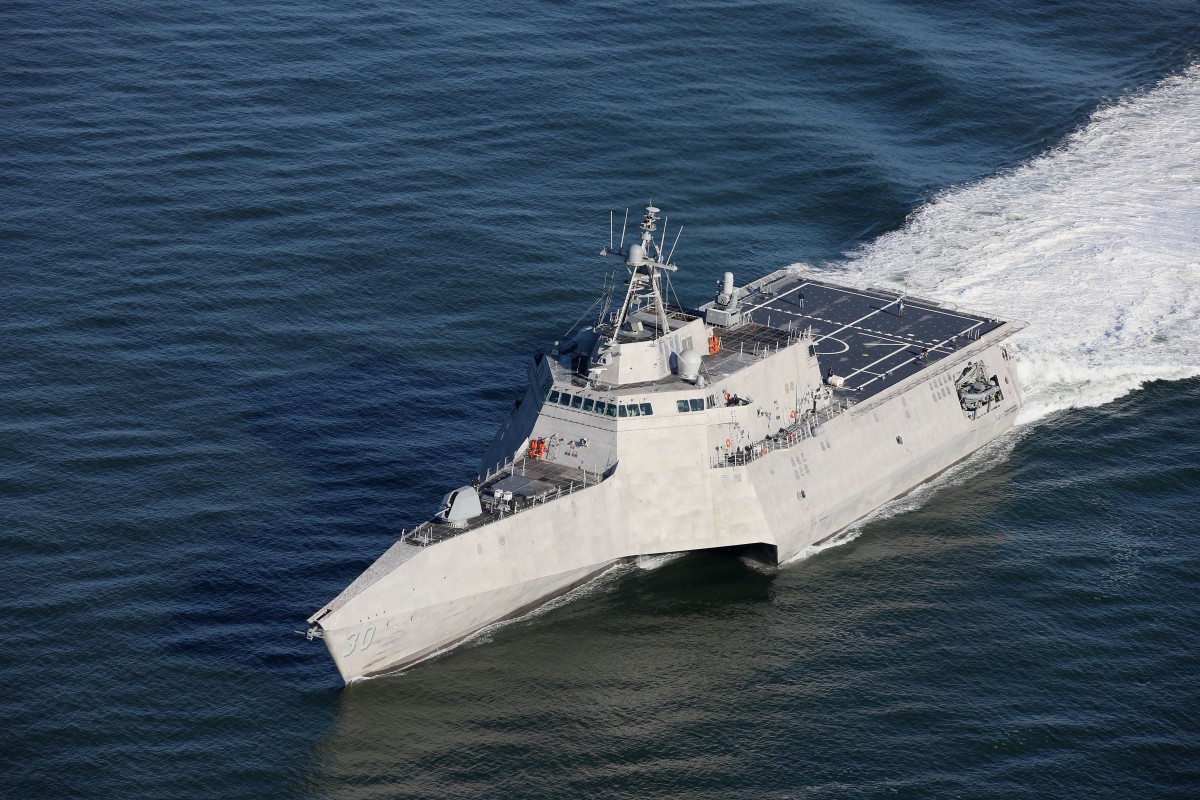Lcs Combining Gear - The U.S. Navy has received its first littoral combat ship since deliveries were halted due to a fleet issue with their complex integration of gear systems.
The Navy suspended deliveries in January of this year and received the first new ship on November 18.
Lcs Combining Gear

The future USS Minneapolis-Saint Paul (LCS 21) has been delivered to Lockheed Martin's Fincantieri Marinette Marine (FMM) shipyard, more than a year after the ship actually completed sea trials.
Make It Work
After the rigorous Minneapolis-St. Paul test, the fleet adopted a mixed gear shift that allowed for unrestricted operations, addressing the class error identified when deploying more of these ships. LCS 21 was the first Freedom variant ship to be overhauled.
According to the Navy, the bearings of the coupling mechanism cannot operate at full capacity, preventing the ships from reaching their maximum design speed of 40 knots.
"Based on the results of land and sea trials, Lockheed Martin and the Navy have determined that the combined gear design modification is satisfactory and will allow unrestricted operation of Freedom-version ships once installed," said the Rear Adm. Casey Moton told reporters Thursday.
"A unique ship conducting operations around the world today is a significant shipbuilding milestone in the future USS Minneapolis-Saint Paul's life," said LCS program manager Capt. Mike Taylor. "I look forward to joining the Minneapolis-St. Paul sister ships, which have 100 percent propulsion power available for unrestricted use."
Navy Accepts Delivery Of Future Uss Cooperstown (lcs 23)
The upcoming USS Minneapolis-Saint Paul will be the second Navy ship to honor Minnesota's twin cities, though each city has previously been honored twice. The US Navy's first warship, Minneapolis-St. Paul, was a Los Angeles-class submarine that participated in Operation Desert Shield/Desert Storm in 1983. USS Minneapolis-Saint Paul (SSN 708) was the first submarine to carry Tomahawk missiles designed specifically to strike Iraq during the Persian Gulf War. After more than two decades in service, the Minneapolis-St. Paul submarine was decommissioned in 2007.
Pending successful sea trials of the integrated transmission, Cooperstown (LCS 23) is scheduled for delivery in January 2022.
Additional LCSs in various stages of construction include Marinette (LCS 25), Nantucket (LCS 27), Beloit (LCS 29), and Cleveland (LCS 31).

This website uses cookies to improve your experience. We think it's good for you, but you can choose if you want. Cookie settings are ACCEPTED
Uss Cooperstown (lcs 23)
This website uses cookies to improve your experience while browsing the website. Among these cookies, cookies categorized as necessary are stored in the browser because they are necessary for the basic equipment of the website to function. We also use third-party cookies to help us analyze and understand how you use this website. These cookies are stored in your browser only with your consent. You also have the option to refuse these cookies. But opting out of some of these cookies may affect your browsing experience.
Necessary cookies are essential for the website to function properly. This category only includes cookies that provide basic functionality and security features of the website. These cookies do not store any personal information.
Non-necessary cookies are any cookies that are not strictly necessary for the website to function and are specifically used to collect user personal data through analytics, ads, other content. It is mandatory to obtain user consent before running these cookies on your website. MAIN | US Navy - Ships | US Navy - Air Units | USMC - Air Installations | International Naval Forces | Weapon System | Special reports
LCS 1 USS Freedom (2008) LCS 3 USS Fort Worth (2012) LCS 5 USS Milwaukee (2015) LCS 7 USS Detroit (2016) LCS 9 USS Little Rock (2017) LCS 11 USS Sioux City (2018) LCS 15 USS (2018) Billings (2019) LCS 17 USS Indianapolis (2019) LCS 19 USS St. Louis (2020) LCS 21 USS Minneapolis-St. Paul (?) LCS 23 USS Cooperstown (?) LCS 25 USS Marinette (?) LCS 27 USS Nantucket (?) LCS 29 USS Beloit (?) LCS 31 USS Cleveland (?)
Lcs 25 Uss Marinette (pcu) Getting The Combining Gear Fix At North Shore Marine Terminal & Logistics Escanaba, Mi. June 12, 2022 (4160 X 3120)
Speed: 47 knots (87 km/h) at sea 3 Range: 3,500 NM (6,500 km) at 18 knots (33 km/h) Extras: 50 main crew / accommodation for 75
4 x Rolls-Royce Kamewa 153SII jets; 2 controlled installed power: 4 x Isotta Fraschini V1708 diesel engine Hitzinger generator sets, 800 kW each
1 x Mk. 49 missile launchers for RIM-116 Rolling Airframe Stiles (RAM) (LCS 1-15) 1 x Mk.15 Mod.31 SeaRAM CIWS (LCS 17-31)

Aviation: 1 x MH-60R/S Seahawk helicopter 1-2 x MQ-8B / MQ-8C Fire Scout UAV Systems: EADS North American TRS-3D air and surface search radar, LCS 17 Lockheed Martin COMBATSS- TRS from 21 -4D combat management system AN/SQR-20 multifunctional retractable array (as part of the ASW mission module) Argon ST WBR-2000 ESM system Terma A/S SKWS decoy system
Uss Fort Worth Departs Singapore For San Diego > Commander, U.s. 7th Fleet > Display
The Liberty class is proposed by a consortium formed by Lockheed Martin as the "prime contractor" and Fincantieri (the project) through its subsidiary Marinette Marine (the manufacturer) as a candidate for a fleet of small, multi-purpose warships operating in the littoral zone. Two ships have been approved to compete with the Independence-class design, which General Dynamics and Austal are bidding for a contract to build up to 55 ships.
Despite initial plans to receive only two each of the Liberty and Independence variants, the US Navy has announced plans to order up to 10 additional ships of each class, for a total of 12 ships. Five vessels were operational in 2016, with an additional nine on order, under construction, or due to expire.
In early September 2016, it was announced that the first four ships in the LCS program would be used as test ships rather than with the fleet. This includes Freedom and Fort Worth. In February 2020, the Navy announced plans to field the first four LCS ships. On June 20, 2020, the US Navy announced that all four would be decommissioned and placed on inactive reserve in March 2021.
Planning for a class of small, multi-purpose warships operating in the littoral zone began in the early 2000s. The construction contract was awarded to Lockheed Martin's LCS team (Lockheed Martin, Gibbs & Cox, Marinette Marine, Bollinger Shipyards) in May 2004 for two ships. It will then be compared to two ships built by Austal USA to determine what design the Navy needs to produce up to 55 ships.
The Navy's Littoral Combat Ship Is Here For The Long Haul
On April 15, 2003, the Lockheed Martin LCS team unveiled the Sea Blade concept, based on the hull form of the Destriero motor yacht.
The flagship Freedom was laid down by Marinette Marine in June 2005 in Marinette, Wisconsin. She was christened in September 2006, commissioned into the Navy in September 2008 and commissioned in November. During the INSURV trials, 2,600 differences were identified, of which 21 were considered high priority. All of this was not fixed before the ship entered service, as moving the ship out of Milwaukee before winter was considered a high priority.
Cost overruns in Freedom's construction and expected future overruns led the government to issue a "work stoppage" in January 2007, and ultimately on April 13, 2007, construction of the LCS-3 (Lockheed Martin's second ship) was halted. This ship was later re-ordered.

After much controversy over how to proceed with testing and orders, in November 2010, the Navy asked Congress to approve version 10 of Freedom and Independence.
U.s. Navy And Lockheed Martin To Split Cost Of Lcs Combining Gear Fix
The ship is a semi-smoothed steel monohull with an aluminum superstructure. She is 377 feet (115 m) long, displaces 3,500 metric tons (3,400 long tons) and can reach 47 knots (87 km/h; 54 mph). The design includes a large, reconfigurable seaframe that allows rapid exchange of mission modules, a flight deck with an integrated helicopter launch, recovery and handling system, and the ability to launch and recover boats (manned and unmanned) from the rear and side.
The flight deck is one and a half times the size of standard surface ships and uses the Trigon tracking system to move helicopters in and out of the hangar. The ship has two means of launching and retrieving the various mission packages: the rear ramp and the door on the starboard side near the waterline. The mission module bay contains three-axis cranes for positioning modules or payloads.
The foredeck has a modular weapons area that can be used for the Mk. 110 57 mm gun turret or rocket launcher. For short-range defense against aircraft and cruise missiles, a flying rocket launcher is mounted above the hangar, and .50 caliber gun mounts are provided on top. The fleet-class unmanned surface ship is designed to operate from ships of the Freedom variant.
The main crew is 40 sailors, usually accompanied by a mission package crew and an aviation detachment of about 75 people. Automation allows for crew reductions, which can significantly reduce operating costs, but workloads can still be "harmful." During the trial of the flagship class, two ship companies rotate through a four-month assignment.
Current Uss Little Rock Is On Dod List To Be Scrapped
Four 750 kilowatt Fincantieri Isotta Fraschini diesel generators provide 3 power.
Lcs championship, lcs landscapes, lcs construction, lcs products, lcs 25p, lcs certification, lcs, combining, lcs 624d, lcs lawn, lcs gear, lcs tickets
0 Comments